 Caloric Intake Calculator
Caloric Intake Calculator

Our calorie calculator will tell you how many calories you need to consume each day to maintain your current weight. If you would like to lose or gain weight, you can also enter an amount of weight you would like to gain or lose along with a time period you would like to shift weight in and our calculator will also figure the caloric consumption needs to reach your goal & maintain your new body weight thereafter.
Usage Instructions
Are you looking to maintain your current weight? This calculator will help you determine a daily caloric intake for your current weight, reaching any other weight goal & maintaining weight after reaching a goal.
First input your health details including gender & height. Then choose a daily activity level from the available pull-down menu. Enter how much you'd like to gain or lose and a time period that you would like to achieve your goal. If you do not want to change your weight then leave the weight loss setting at 0.
Press CALCULATE, and you’ll see estimated calorie requirements for maintaining your current weight, as well as a number for reaching your goal & then maintaining that new goal.
The above should give a fairly accurate calorie number for reaching your goal, but to get a most accurate Total Daily Energy Expenditure (TDEE), get your body composition tested and enter your stats in the "body fat percentage" field.
Please seek the help of medical & nutritional professionals before drastically altering your exercise or diet.
SUGAR: The Bitter Truth
Here is the backstory on the following fantastic educational video which explains why sugar is so horrible for your health.
Sugar & other fast acting carbohydrates spike your blood sugar level, which in turn leads to your blood sugar level later crashing & thus making you hungry again sooner. No matter how hard you work out, it is hard to lose body mass if you have metabolic syndrome & are resistant to leptin. You can't outrun your fork & it is hard to get your fork under control if you are leptin resistant.
500 Calories a Day

Losing a pound requires burning an extra 3,500 calories. Since there are 7 days in a week, this would mean losing a pound a week would require a 500 calorie daily deficit.
How long would I have to ___ to burn 500 calories?
Approximate minutes of exercise needed to burn 500 calories, by personal weight.
The exercise time columns can be sorted from high to low or low to high by clicking on a weight. All times are in minutes. You can also use this calculator to see how many calories you will burn over x minutes of exercise.
| Exercise | 100 lbs | 125 lbs | 150 lbs | 175 lbs | 200 lbs | 250 lbs | 300 lbs |
|---|---|---|---|---|---|---|---|
| Aerobics: low impact | 114 | 91 | 76 | 65 | 57 | 45 | 38 |
| Aerobics: high impact | 89 | 71 | 60 | 51 | 45 | 36 | 30 |
| Aerobics, Step: low impact | 89 | 71 | 60 | 51 | 45 | 36 | 30 |
| Aerobics, Step: high impact | 63 | 50 | 42 | 36 | 31 | 25 | 21 |
| Aerobics: water | 156 | 125 | 104 | 89 | 78 | 63 | 52 |
| Bicycling, Stationary: moderate | 89 | 71 | 60 | 51 | 45 | 36 | 30 |
| Bicycling, Stationary: vigorous | 60 | 48 | 40 | 34 | 30 | 24 | 20 |
| Circuit Training | 78 | 63 | 52 | 45 | 39 | 31 | 26 |
| Rowing, Stationary: moderate | 89 | 71 | 60 | 51 | 45 | 36 | 30 |
| Rowing, Stationary: vigorous | 74 | 59 | 49 | 42 | 37 | 29 | 25 |
| Ski Machine | 66 | 53 | 44 | 38 | 33 | 26 | 22 |
| Stair Stepper | 104 | 83 | 69 | 60 | 52 | 42 | 35 |
| Weight Lifting: light | 208 | 167 | 139 | 119 | 104 | 83 | 69 |
| Weight Lifting: vigorous | 104 | 83 | 69 | 60 | 52 | 42 | 35 |
| Basketball: playing a game | 78 | 63 | 52 | 45 | 39 | 31 | 26 |
| Basketball: wheelchair | 86 | 77 | 64 | 55 | 48 | 38 | 32 |
| Bicycling: BMX or mountain | 74 | 59 | 49 | 42 | 37 | 29 | 25 |
| Bicycling: 12-13.9ph | 78 | 63 | 52 | 45 | 39 | 31 | 26 |
| Bicycling: 14-15.9ph | 63 | 50 | 42 | 36 | 31 | 25 | 21 |
| Boxing: sparring | 69 | 56 | 46 | 40 | 35 | 28 | 23 |
| Football: competitive | 69 | 56 | 46 | 40 | 35 | 28 | 23 |
| Football: touch or flag | 78 | 63 | 52 | 45 | 39 | 31 | 26 |
| Frisbee | 208 | 167 | 139 | 119 | 104 | 83 | 69 |
| Golf: carrying clubs | 114 | 91 | 76 | 65 | 57 | 45 | 38 |
| Golf: using cart | 179 | 143 | 119 | 102 | 99 | 71 | 60 |
| Gymnastics | 156 | 125 | 104 | 89 | 78 | 63 | 52 |
| Handball | 52 | 42 | 35 | 30 | 26 | 21 | 17 |
| Hiking: cross-country | 104 | 83 | 69 | 60 | 52 | 42 | 35 |
| Horseback Riding | 156 | 125 | 104 | 89 | 78 | 63 | 52 |
| Ice Skating | 89 | 71 | 60 | 51 | 45 | 36 | 30 |
| Martial Arts | 63 | 50 | 42 | 36 | 31 | 25 | 21 |
| Racquetball: competitive | 63 | 50 | 42 | 36 | 31 | 25 | 21 |
| Racquetball: casual | 89 | 71 | 60 | 51 | 45 | 36 | 30 |
| Rock Climbing: ascending | 57 | 45 | 38 | 32 | 28 | 23 | 19 |
| Rock Climbing: rapelling | 78 | 63 | 52 | 45 | 39 | 31 | 26 |
| Rollerblade (inline) Skating | 89 | 171 | 60 | 51 | 45 | 36 | 30 |
| Rope Jumping | 63 | 50 | 42 | 36 | 31 | 25 | 21 |
| Running: 5ph (12min/mile) | 78 | 63 | 52 | 45 | 39 | 31 | 26 |
| Running: 5.2ph (11.5min/mile) | 69 | 56 | 46 | 40 | 35 | 28 | 23 |
| Running: 6ph (10min/mile) | 63 | 50 | 42 | 36 | 31 | 25 | 21 |
| Running: 6.7ph (9min/mile) | 57 | 45 | 38 | 32 | 28 | 23 | 19 |
| Running: 7.5ph (8min/mile) | 50 | 40 | 33 | 29 | 25 | 20 | 17 |
| Running: 8.6ph (7min/mile) | 43 | 34 | 29 | 25 | 22 | 17 | 14 |
| Running: 10ph (6min/mile) | 38 | 30 | 25 | 22 | 19 | 15 | 13 |
| Running: pushing wheelchair | 78 | 63 | 52 | 45 | 39 | 31 | 26 |
| Running: cross-country | 69 | 56 | 46 | 40 | 35 | 28 | 23 |
| Skiing: cross-country | 78 | 63 | 52 | 45 | 39 | 31 | 26 |
| Skiing: downhill | 104 | 83 | 69 | 60 | 52 | 42 | 35 |
| Snow Shoeing | 78 | 63 | 52 | 45 | 39 | 31 | 26 |
| Softball: general play | 125 | 100 | 83 | 71 | 63 | 50 | 42 |
| Swimming: general | 104 | 83 | 69 | 60 | 52 | 42 | 35 |
| Tennis: general | 89 | 71 | 60 | 51 | 45 | 36 | 30 |
| Volleyball: non-competitive | 208 | 167 | 139 | 119 | 104 | 83 | 69 |
| Volleyball: competitive | 156 | 125 | 104 | 89 | 78 | 63 | 52 |
| Volleyball: beach | 78 | 63 | 52 | 45 | 39 | 31 | 26 |
| Walk: 3.5ph (17min/mile) | 156 | 125 | 104 | 89 | 78 | 63 | 52 |
| Walk: 4ph (15min/mile) | 139 | 111 | 93 | 79 | 69 | 56 | 46 |
| Walk: 4.5ph (13min/mile) | 125 | 100 | 83 | 71 | 63 | 50 | 42 |
| Walk/Jog: jog <10min. | 104 | 83 | 69 | 60 | 52 | 42 | 35 |
| Water Skiing | 104 | 83 | 69 | 60 | 52 | 42 | 35 |
| Water Polo | 89 | 71 | 60 | 51 | 45 | 36 | 30 |
| Whitewater: rafting, kayaking | 89 | 71 | 60 | 51 | 45 | 36 | 30 |
| Exercise | 100 lbs | 125 lbs | 150 lbs | 175 lbs | 200 lbs | 250 lbs | 300 lbs |
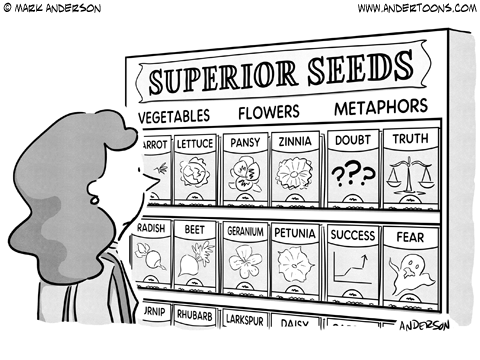
Balancing Your Calorie Intake to Maintain a Healthy Weight
- Guide Authored by Corin B. Arenas, published on September 11, 2019
Maintaining the right weight can be a challenge as you age. As people grow old, their metabolism slows down, making it easier to gain extra pounds.[1] The added weight even affects self-esteem, making people more sluggish and sedentary.
Over time, if you don't manage excess pounds, you might become overweight. The National Institutes of Health (NIH) states that obesity increases the risk of medical problems, such as coronary heart disease, type 2 diabetes, cancer, and respiratory illness.[2]
To manage your weight, it's important to balance your calorie intake. Read on to find out how you can achieve this goal.
What are calories?
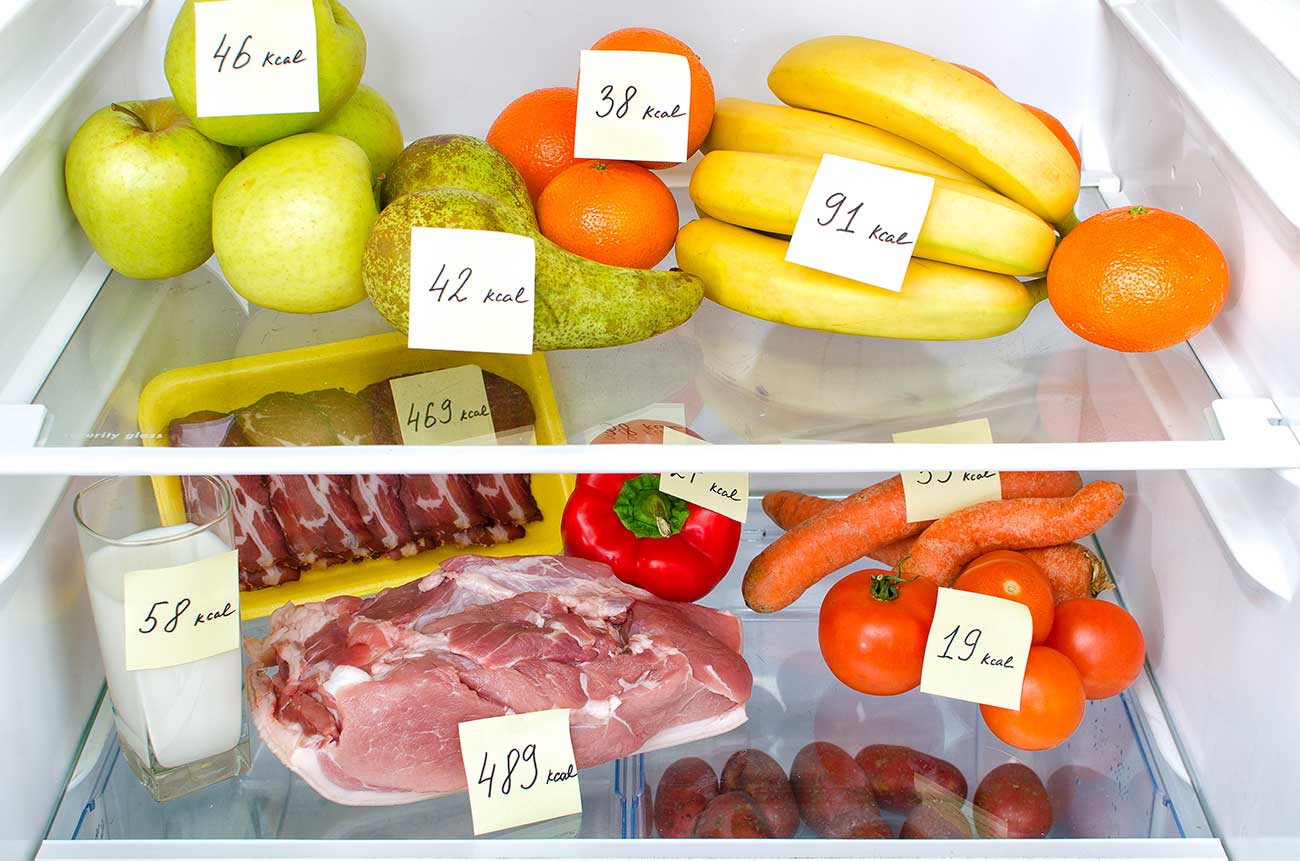
The energy your body absorbs from nutrients in food is measured in calories. We use this energy to fuel bodily functions. Whenever we drink and eat food, we take energy in. When we move or perform complex activities, we burn calories, expending energy out.
What happens when calories are not burned? They are stored as fat in the body for later use.[3]
Why is it Important to Balance Calorie Intake?
While many factors affect weight, balancing calorie intake from food can help you lose pounds or maintain a healthy weight.
According to the National Heart, Lung and Blood Institute (NHLBI), here's how calorie or energy balance works [4]:
| Number of Calories | Result | Implications |
|---|---|---|
| The same amount of calories IN and same amount OUT | Weight stays the same = energy balance | Retain the energy balance = maintain your ideal weight |
| More calories IN and less calories OUT | Weight gain | People who are not active tend gain more weight. |
| More calories OUT and less calories IN | Weight loss | People who are more active tend to lose weight. |
Energy in and out do not necessarily need to balance daily. Balancing happens over time, which helps people maintain a healthy weight.
However, for instance, if you add 200 calories to your diet and continuously eat this way for months, you will surely gain weight.
What's the right number of calories?
It depends on your age, amount of physical activity, and whether you're male or female. Refer to this Estimated Calorie Requirement Chart from the Office of Disease Prevention and Health Promotion (ODHP).[5]
Males
| Age | Sedentary | Moderately active | Active |
|---|---|---|---|
| 18 | 2,400 | 2,800 | 3,200 |
| 19-20 | 2,600 | 2,800 | 3,000 |
| 21-25 | 2,400 | 2,800 | 3,000 |
| 26-30 | 2,400 | 2,600 | 3,000 |
| 31-35 | 2,400 | 2,600 | 3,000 |
| 36-40 | 2,400 | 2,600 | 2,800 |
| 41-45 | 2,200 | 2,600 | 2,800 |
| 46-50 | 2,200 | 2,400 | 2,800 |
| 51-55 | 2,200 | 2,400 | 2,800 |
| 56-60 | 2,200 | 2,400 | 2,600 |
| 61-65 | 2,000 | 2,400 | 2,600 |
Females
| Age | Sedentary | Moderately active | Active |
|---|---|---|---|
| 18 | 1,800 | 2,000 | 2,400 |
| 19-20 | 2,000 | 2,200 | 2,400 |
| 21-25 | 2,000 | 2,200 | 2,400 |
| 26-30 | 1,800 | 2,000 | 2,400 |
| 31-35 | 1,800 | 2,000 | 2,200 |
| 36-40 | 1,800 | 2,000 | 2,200 |
| 41-45 | 1,800 | 2,000 | 2,200 |
| 46-50 | 1,800 | 2,000 | 2,200 |
| 51-55 | 1,600 | 1,800 | 2,200 |
| 56-60 | 1,600 | 1,800 | 2,200 |
| 61-65 | 1,600 | 1,800 | 2,000 |
| 66-70 | 1,600 | 1,800 | 2,000 |
Calorie Counting: Effective or a Myth?
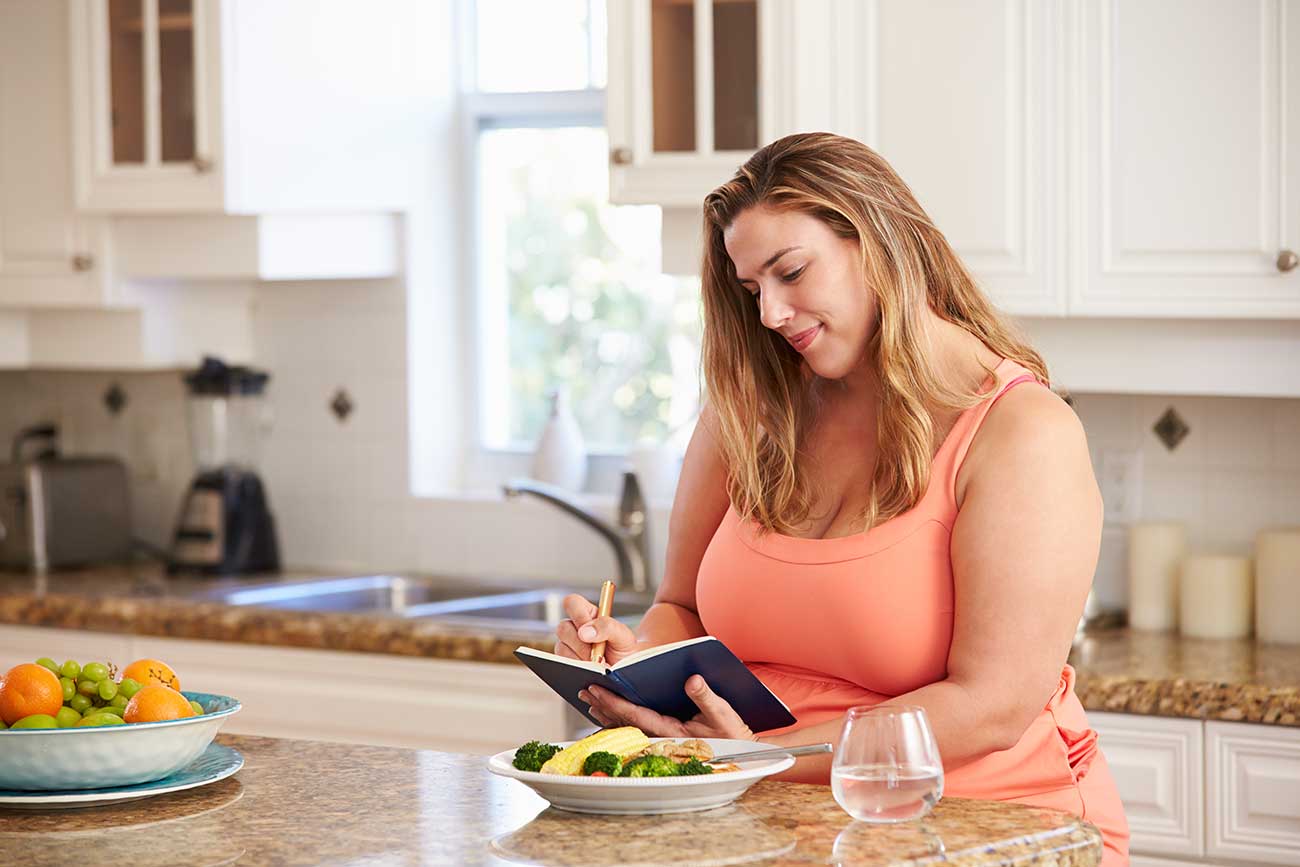
According to Healthline, counting calories is a time-tested way to lose weight.[6]
The body needs a calorie deficit to lose pounds. When the calories from food are not enough to fuel the body, it draws energy from stored fat.
Though some researchers claim a calorie deficit is not needed for weight loss, most of those studies lack proper research parameters. Healthline highlights three major reasons why such studies had poor models:
- Subjects are bad at estimating what they eat.
- Low-carb diets are higher in protein and fat.
- The studies usually measured weight loss instead of fat loss.
To settle the discussion, researchers reviewed experiments which controlled these three factors to come up with conclusive results.
Based on findings, studies consistently show that weight loss is a result of taking in fewer calories than what is expended. This is regardless of whether the deficit comes from eating less carbs, fat or protein.[7, 8]
Take note: Not all calories are created equal. In terms of nutrition, 100 calories from a chocolate bar is not the same as 100 calories from fresh fish. While you still need fewer calories to lose weight, when it comes to your health, it's best to eat more nutritious food.
In the past, people counted calories by logging into food journals. They read ‘Nutrition Facts' and stay away from food products that don't have ingredients in the label. This takes a lot of effort and commitment. But today, people can track their diet using online apps that automatically estimate calories for all types of food. This makes it easier to know if you're hitting your daily calorie goal.
How to Determine If You Have a Healthy Weight
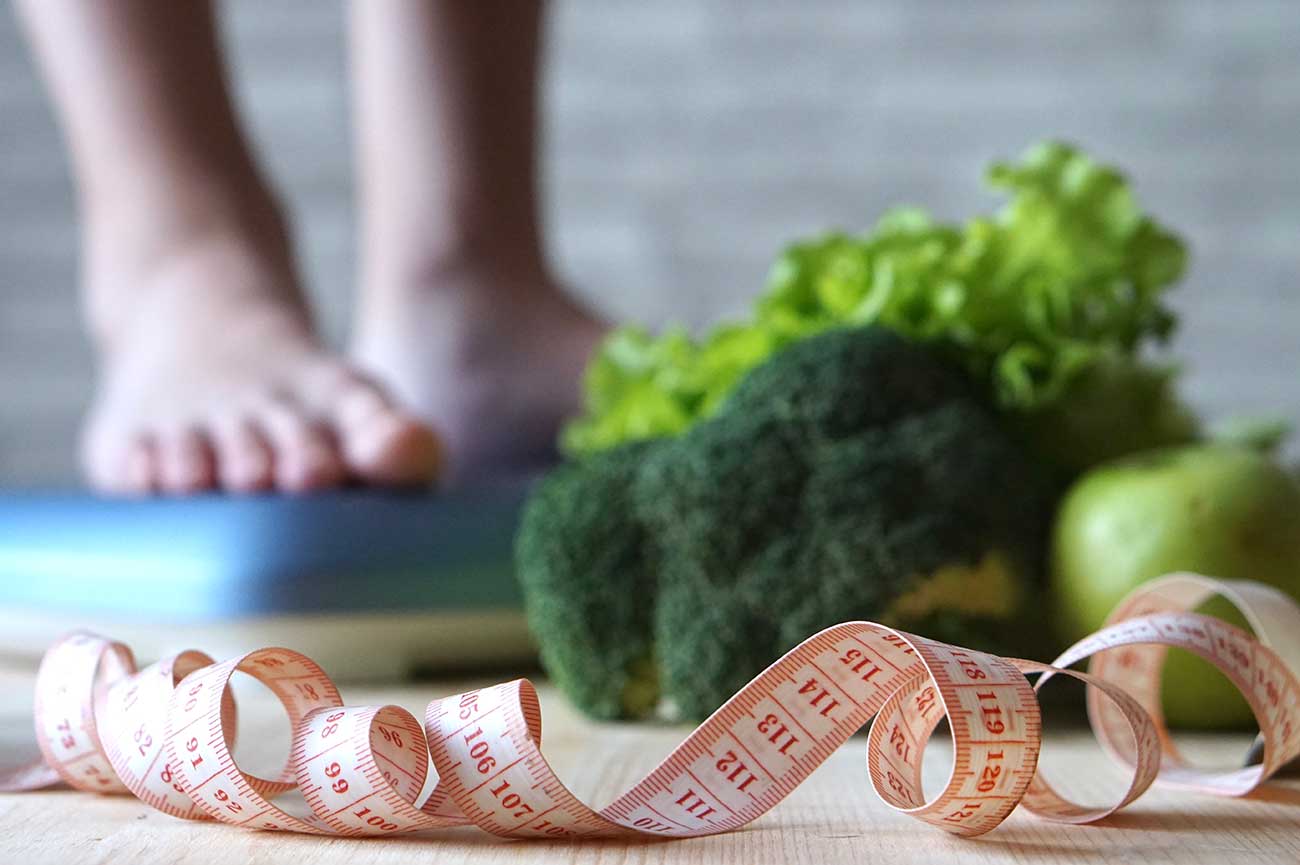
The Centers for Disease Prevention and Control (CDC) recommends 2 methods to assess your weight [9]:
- Body Mass Index (BMI)
- Waist Circumference
BMI is basically a person's weight (kg) divided by the square of their height (m^2).
BMI = kg / m^2
High BMI indicates high body fat for most men and women, except for athletes with high BMI due to dense muscle mass. The BMI Index below indicates whether a person is healthy or overweight.
- If BMI is less than 18.5 – Underweight
- If BMI is between 18.5-24.9 – Healthy Weight
- If BMI is between 25-29.9 – Overweight
- If BMI is 30 or more – Obese
To get your BMI, you can use this calculator.
Is your BMI right for your height? Refer to this adult BMI chart from the NHLBI.
| Height | BMI 19-24 Healthy Weight (in lbs.) |
BMI 25-29 Overweight (lbs.) |
BMI 30-35 Obese (in lbs.) |
|---|---|---|---|
| 4'10” | 91-115 | 119-138 | 143-167 |
| 4'11” | 94-119 | 124-143 | 148-173 |
| 5′ | 97-123 | 128-148 | 153-179 |
| 5'1″ | 100-127 | 132-153 | 158-185 |
| 5'2″ | 104-131 | 136-158 | 164-191 |
| 5'3″ | 107-135 | 141-163 | 169-197 |
| 5'4″ | 110-140 | 145-169 | 174-204 |
| 5'5″ | 114-144 | 150-174 | 180-210 |
| 5'6″ | 118-148 | 155-179 | 186-216 |
| 5'7″ | 121-153 | 159-185 | 191-223 |
| 5'8″ | 125-158 | 164-190 | 197-230 |
| 5'9″ | 128-162 | 169-196 | 203-236 |
| 5'10” | 132-167 | 174-202 | 209-243 |
| 5'11” | 136-172 | 173-208 | 215-250 |
| 6′ | 140-177 | 184-213 | 221-258 |
| 6'1″ | 144-182 | 189-219 | 227-265 |
| 6'2″ | 148-186 | 194-225 | 233-272 |
| 6'3″ | 152-192 | 200-232 | 240-279 |
If you're overweight, BMI tells you how much you need to lose. Even if you don't pack as much pounds, it can indicate that you're about to if you gain a little more weight.
Next, waist circumference indicates whether you have high chances of developing obesity-related conditions. After calculating your BMI, it's a good screening tool to assess excessive abdominal fat.
You have greater risk of having obesity-related problems if:
- You're male with a waist circumference of over 40 inches
- You're female with a waist circumference of over 35 inches
Take note: This method is intended for adult men and women, not for adolescents.
What's a safe weight loss rate?
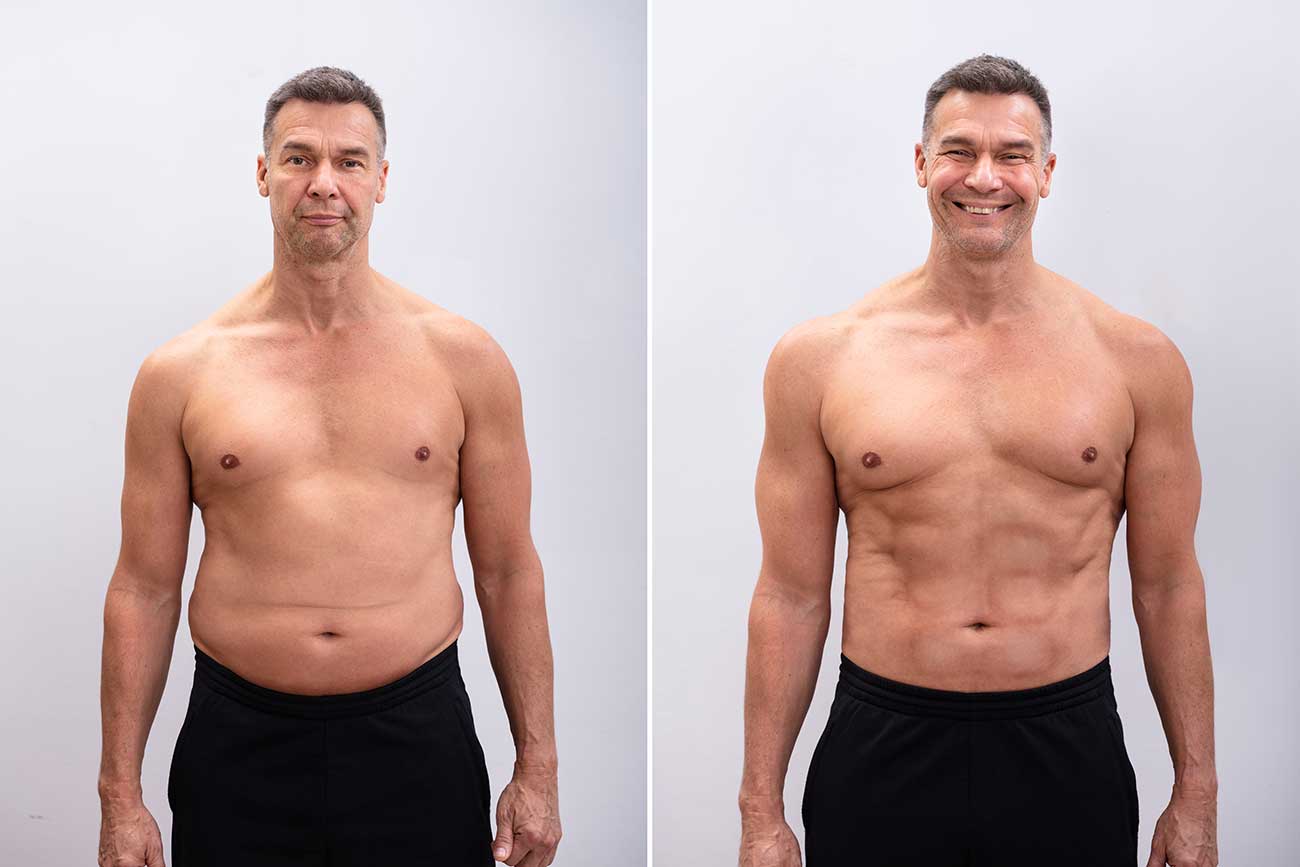
NHLBI states that it's safe to lose 1 to 2 lbs. of weight per week.[10] That's 4 to 8 lbs. a month. If you aim to lose 5% to 10% of your current weight within 6 months, it will help reduce your risk of heart disease and other chronic ailments.
How big should your calorie deficit be for weight loss? If you're obese, the NHLBI states you must aim to reduce intake (or increase the amount you burn) by 500 calories or more each day.
However, it's best to consult your doctor or nutritionist. People have different body types, and what is generally recommended may not always work for everyone. Your health provider should assess your condition thoroughly to design a safe and effective diet plan.
The Best Strategies to Eat Fewer Calories

According to WebMD director of nutrition Kathleen M. Zelman, the key to consuming fewer calories is to select foods that are low in energy density.[11]
Energy density is the amount of calories in a portion of food. Choosing low energy density meals allow you to eat a bit more and feel full longer. This helps prevent you from snacking on calorie-rich snacks in between meals.
What foods are low in energy density? These include fruits and vegetables that are high in fiber and water content. Here's an example that shows how much more you can eat if you consume a low energy density snack.
Snack, 100 calories
| Food | Grapes | Raisins |
|---|---|---|
| Volume | 2 Cups | ¼ Cup |
| Calories | 100 | 100 |
For 100 calories, eating 2 cups of grapes is more satisfying than eating just 1/4 cup of raisins. Therefore, replacing high calorie foods with greens, protein and fruits can help manage weight and hunger pangs. High fiber foods aid in suppressing hunger, while calorie-dense foods tend to make people crave more food.
Is skipping meals a good idea? This is generally not recommended, according to the National Health Services (NHS).[12] Skipping meals can make you feel tired, making you more likely to overeat during your next meal.
Here are other effective ways to cut calories:
- Don't Drink Sweetened Beverages – Sodas, juices, and practically any processed beverage is packed with calories. A study also suggests sweetened drinks can increase a person's hunger later on.[13] Drink water instead.
- Drink Water Before Meals – Water keeps you from having hunger pangs. A study found that drinking 2 cups of water (500 ml) before eating can lower calorie intake by up to 13%.[14]
- Avoid Adding Sauce or Dressing – Condiments like mayonnaise or catsup can easily add more calories to a meal. A tablespoon of mayonnaise packs 57 calories.
- Watch Your Portion Size – People tend to overeat when surrounded by large amounts of food. Get smaller food portions and make use of smaller plates. You'll likely get lesser food than you normally would.
- Eat Meals Slowly – Taking your time to chew your food can help you feel full longer. According to Harvard Health, if you eat too quickly, your brain may not have enough time to process signals that produce a feeling of satiety.[15]
- Add Protein to Your Meals – Protein helps keep you feel full compared to other nutrients. Research shows it requires more energy to be digested, compared to fat which requires the least.[16] A steady diet of vegetables and fruits with protein can help keep off the pounds.
The Best and Worst Foods for Weight Loss

The best foods can make you feel full for an extended period of time. These are low in calories, high in nutrition content, and packed with fiber or protein. The worst foods, on the other hand, are calorie-rich, high in fat, salty, and packed with sugar.
Below are some of the best and worst foods for losing weight.
| Best Food to Lose Weight | Worst Food to Lose Weight |
|---|---|
| Eggs | Processed Foods |
| Fish | Doughnuts |
| Lean Meat | Pizza |
| Berries | Sweet Cereals |
| Greek Yogurt | Flavored Yogurt |
| Quinoa |
Candy Bars |
| Oatmeal | White Rice |
| Avocados | White Bread |
| Apples | Ice Cream |
| Pickles (fermented food) | Instant Oatmeal |
| Almonds / Walnuts | Watermelons (high in sugar) |
| Chili Peppers | Candied Dried Fruits |
| Spinach | French Fries |
| Cruciferous Vegetables (broccoli, cauliflower, etc.) |
Potato Chips |
| Fried Food | |
| Cheese |
High-Calorie Foods and Blood Sugar Levels
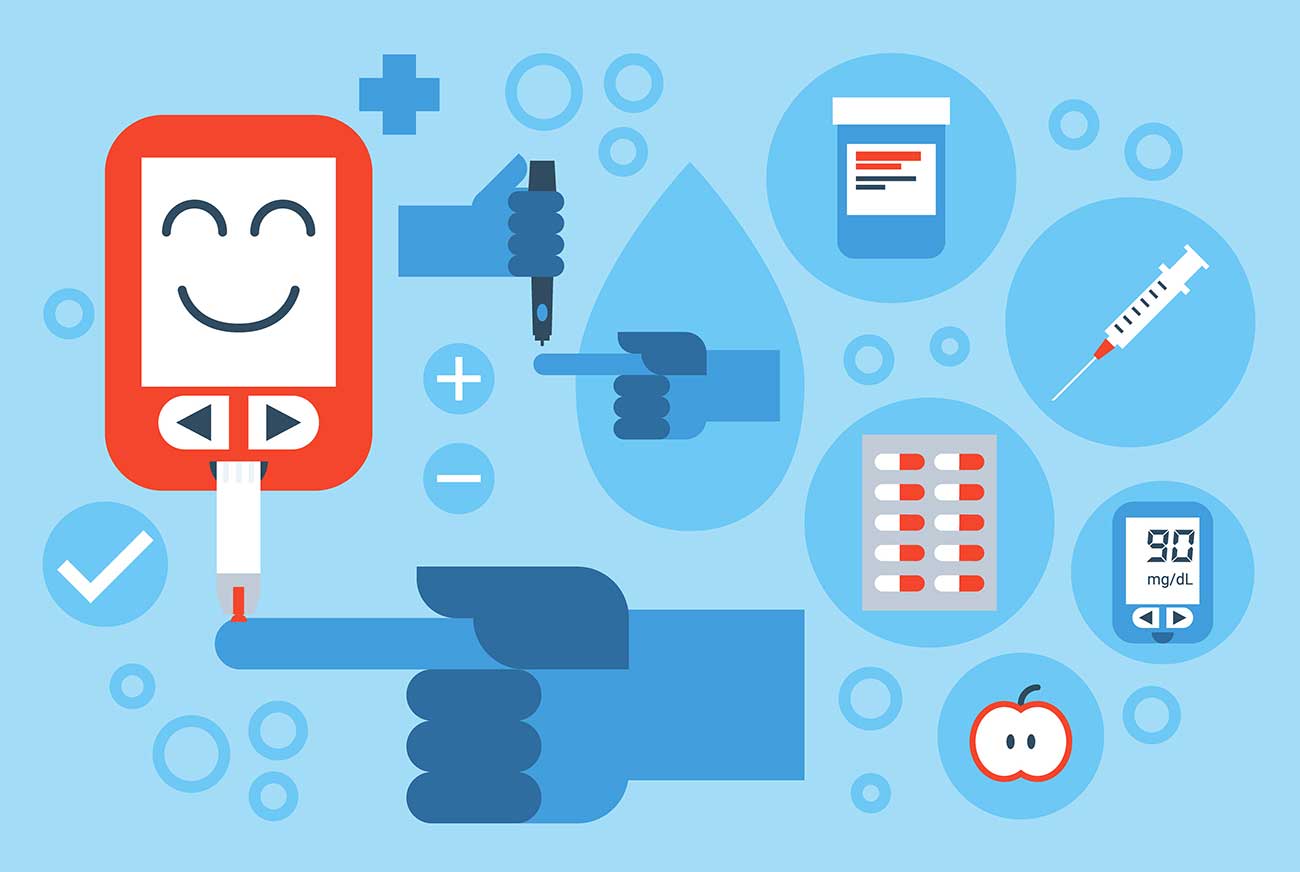
Most calorie-rich foods are loaded with carbohydrates, a macronutrient that turns into glucose. It's used by our body as an energy source. The right glucose levels fuel our cells and organs with energy.
However, if we consume too much carbohydrates, blood sugar levels rise. This increase in glucose is known as hyperglycemia.
To maintain glucose levels within a normal range, the body produces insulin. This hormone instructs cells to store glucose to lower blood sugar levels.
If you have insulin resistance, your body cannot regulate glucose levels, which can lead to type 2 diabetes. On the other hand, if your body produces very little or no insulin at all, you likely have type 1 diabetes.
High Glucose Health Risks
Very high glucose levels spell all kinds of health problems, such as high blood pressure and damage to blood vessels. You're also prone to chronic ailments such heart attack, kidney failure, and eye problems.[17] It's also harder to lose weight because your body is used to burning glucose instead of stored fat.
To avoid these medical issues, lessen your intake of calorie-rich, high-carb foods.
Keep a Healthy Weight for a Fit Body
Being mindful of your calorie intake is crucial for maintaining the right weight and losing excess pounds. Adopting a healthy diet can be a challenge at first, but don't worry. Simple lifestyle and diet changes have a huge impact in the long run.
Apart from choosing more nutritious foods, it's also important to keep yourself physically active. Remember, the more calories you burn, the more likely you'll shed those extra pounds.
About the Author
Working as a health writer since 2016, Corin is interested in longevity research and how to improve the quality of human life. She holds a Master’s degree in Creative Writing from the University of the Philippines, one of the top academic institutions in the world, and a Bachelor’s in Communication Arts from Miriam College. Her other feature articles can be read on Inquirer.net and Manileno.com.
References
- https://www.healthline.com/nutrition/metabolism-and-age
- https://www.nhlbi.nih.gov/sites/default/files/media/docs/obesity-evidence-review.pdf
- https://www.healthline.com/nutrition/calories-in-a-pound-of-fat
- https://www.nhlbi.nih.gov/health/educational/wecan/healthy-weight-basics/balance.htm
- https://health.gov/dietaryguidelines/2015/guidelines/appendix-2/
- https://www.healthline.com/nutrition/does-calorie-counting-work
- https://www.ncbi.nlm.nih.gov/pubmed/15113737
- https://www.ncbi.nlm.nih.gov/pubmed/15867892
- https://www.cdc.gov/healthyweight/assessing/index.html
- https://www.nhlbi.nih.gov/files/docs/public/heart/healthy_wt_atglance.pdf
- https://www.webmd.com/diet/obesity/features/more-food-fewer-calories#1
- https://www.nhs.uk/live-well/healthy-weight/ten-weight-loss-myths/
- https://www.ncbi.nlm.nih.gov/pubmed/26606887
- https://www.ncbi.nlm.nih.gov/pubmed/18589036
- https://www.health.harvard.edu/blog/why-eating-slowly-may-help-you-feel-full-faster-20101019605
- https://www.ncbi.nlm.nih.gov/pmc/articles/PMC524030/
- https://www.medicalnewstoday.com/articles/317483.php
Change privacy settings

